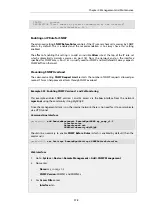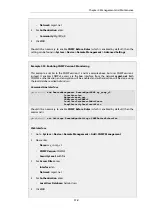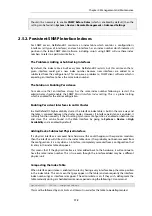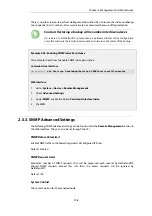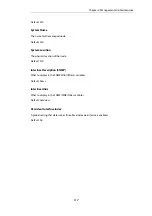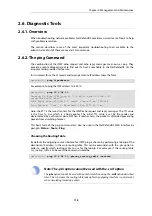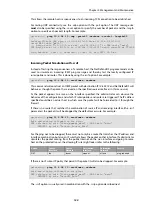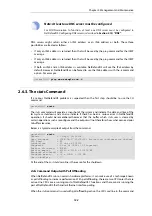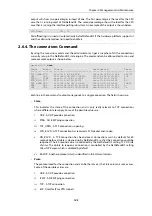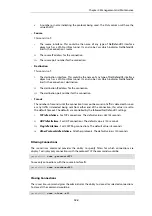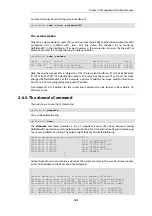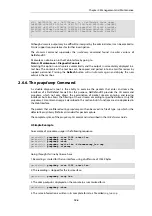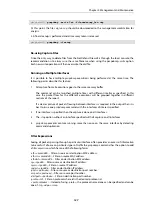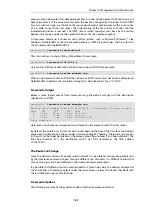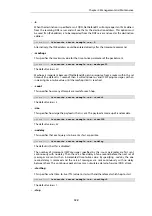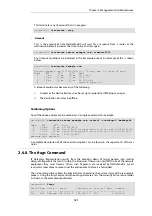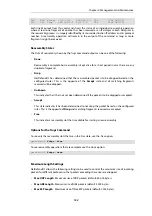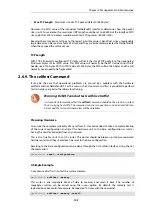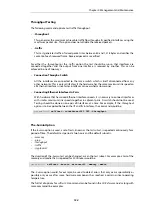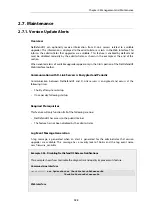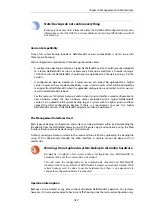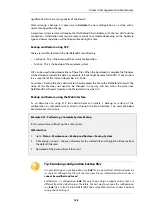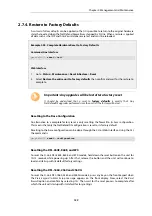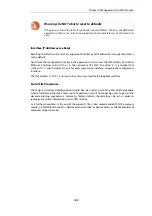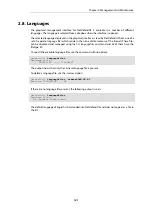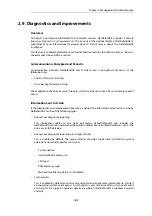
gw-world:/> pcapdump -write lan -filename=cap_lan.cap
At this point, the file
cap_lan.cap
should be downloaded to the management workstation for
analysis.
5. A final cleanup is performed and all memory taken is released.
gw-world:/> pcapdump -cleanup
Re-using Capture Files
Since the only way to delete files from the NetDefend Firewall is through the local console, the
recommendation is to always use the same filename when using the pcapdump
-write
option.
Each new write operation will then overwrite the old file.
Running on Multiple Interfaces
It is possible to have multiple
pcapdump
executions being performed at the same time. The
following points describe this feature:
1.
All capture from all executions goes to the same memory buffer.
The command can be launched multiple times with different interfaces specified. In this
case the packet flow for the different executions will be grouped together in different
sections of the report.
If a clearer picture of packets flowing between interfaces is required in the output then it is
best to issue one
pcapdump
command with the interfaces of interest specified.
2.
If no interface is specified then the capture is done on all interfaces.
3.
The
-stop
option without an interface specified will halt capture on all interfaces.
4.
pcapdump
prevents capture running more than once on the same interface by detecting
command duplication.
Filter Expressions
Seeing all packets passing through a particular interface often provides an excess of information
to be useful. To focus on particular types of traffic the
pcapdump
command has the option to add
a
filter expression
which has one of the following forms:
-eth=<macaddr>
- Filter on source or destination MAC address.
-ethsrc=<macaddr>
- Filter on source MAC address.
-ethdest=<macaddr>
- Filter on destination MAC address.
-ip=<ipaddr>
- Filter source or destination IP address.
-ipsrc=<ipaddr>
- Filter on source IP address.
-ipdest=<ipaddr>
- Filter on destination IP address.
-port=<portnum>
- Filter on source or destination port number.
-srcport=<portnum>
- Filter on source port number.
-destport=<portnum>
- Filter on destination port number.
-proto=<id>
- Filter on protocol where id is the decimal protocol id.
-<protocolname>
- Instead of using
-proto=
, the protocol name alone can be specified and can be
one of
-tcp
,
-udp
or
-icmp
.
Chapter 2: Management and Maintenance
127
Summary of Contents for NetDefendOS
Page 30: ...Figure 1 3 Packet Flow Schematic Part III Chapter 1 NetDefendOS Overview 30 ...
Page 32: ...Chapter 1 NetDefendOS Overview 32 ...
Page 144: ...Chapter 2 Management and Maintenance 144 ...
Page 284: ...Chapter 3 Fundamentals 284 ...
Page 392: ...Chapter 4 Routing 392 ...
Page 419: ... Host 2001 DB8 1 MAC 00 90 12 13 14 15 5 Click OK Chapter 5 DHCP Services 419 ...
Page 420: ...Chapter 5 DHCP Services 420 ...
Page 573: ...Chapter 6 Security Mechanisms 573 ...
Page 607: ...Chapter 7 Address Translation 607 ...
Page 666: ...Chapter 8 User Authentication 666 ...
Page 775: ...Chapter 9 VPN 775 ...
Page 819: ...Chapter 10 Traffic Management 819 ...
Page 842: ...Chapter 11 High Availability 842 ...
Page 866: ...Default Enabled Chapter 13 Advanced Settings 866 ...
Page 879: ...Chapter 13 Advanced Settings 879 ...

